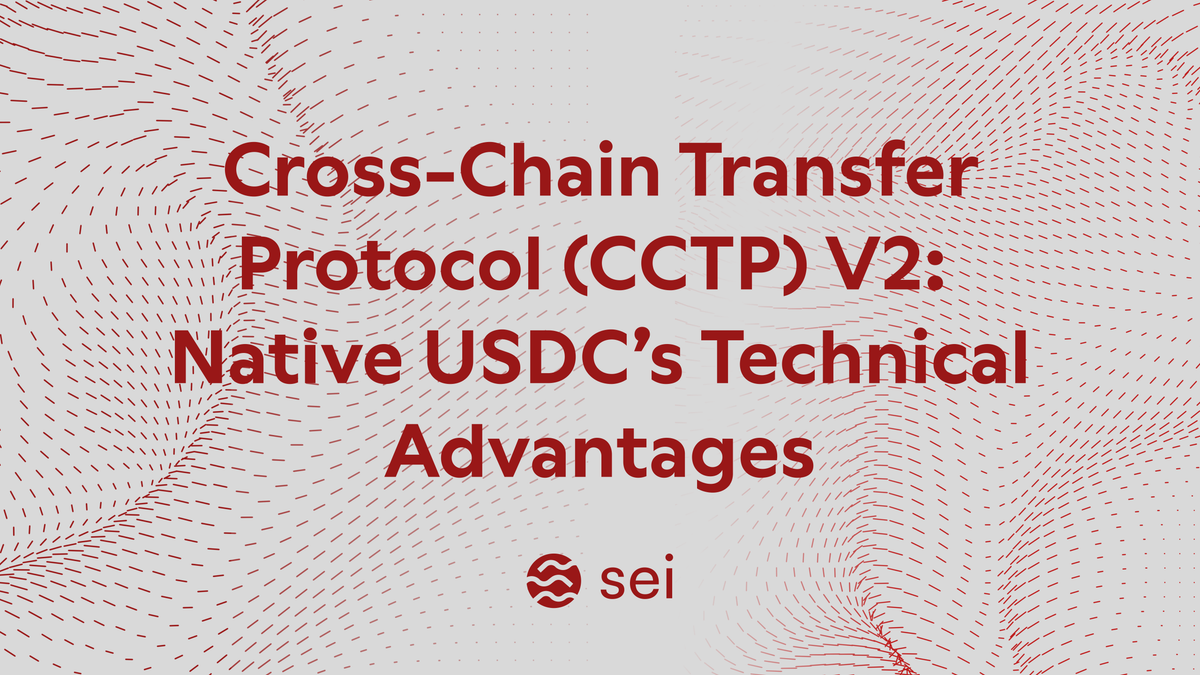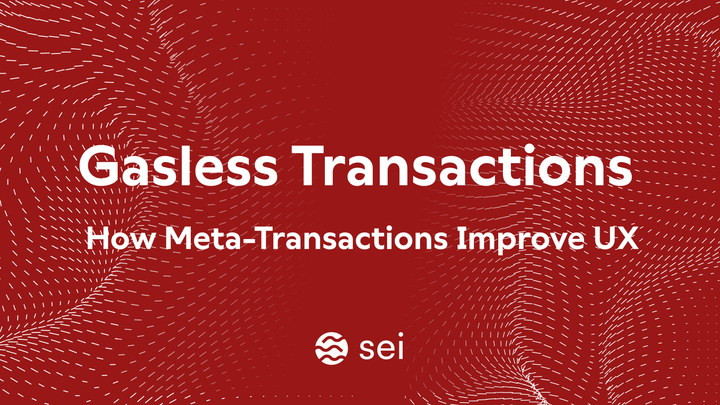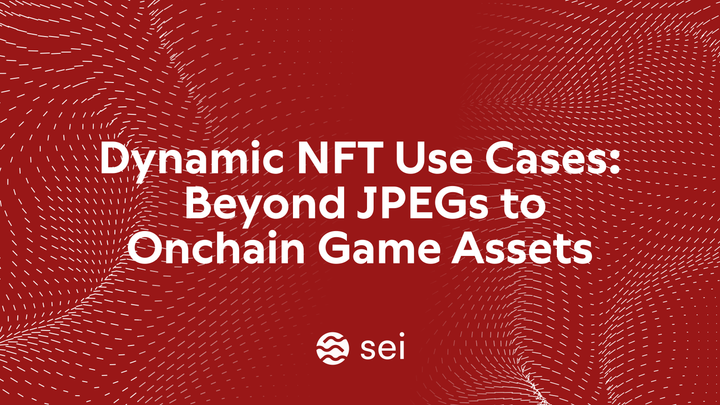Cross-Chain Transfer Protocol (CCTP) V2: Native USDC's Technical Advantages
CCTP V2 brings native, redeemable, secure USDC to Sei. Cut bridge risk, unify liquidity, and enable institutional-grade cross-chain settlement.

USDC offers trusted liquidity for moving capital across protocols with CCTP V2. The synergy between CCTP V2 and Sei creates unique benefits for both developers and institutions alike.
With $219 billion in monthly trading volume, USDC commands a 30% market share of DEX activity. Despite competition from tokenized Treasury-backed assets, USDC remains a reliable and popular medium, especially with the introduction of Circle’s cross-chain transfer protocol (CCTP) V2.
CCTP V2 eliminates the need to bridge USDC. Instead, it burns USDC on the source chain and mints native, Circle-issued USDC on the destination chain. This ensures every token is fully backed, directly redeemable, and part of a single, unified liquidity pool.
Native USDC and CCTP V2 have found a new home on Sei. The blockchain’s 100 megagas per second throughput and 400ms finality deliver near-instant and high-assurance settlements. With the proposed Sei Giga network upgrade, this throughput will reach heights of 5 gigagas per second (~200k TPS), enabling high-performance DeFi.
The synergy between CCTP V2 and Sei creates unique benefits for both developers and institutions. For developers, it means seamless composability with native USDC across DeFi apps. For institutions, it creates a stable, compliant, and performant base layer for cross-chain operations. This establishes the foundation for institutional-grade liquidity that fuels the next phase of hyper-performance DeFi.
In this article, we’ll take a deep dive into:
- What Is CCTP V2? Exploring the evolution from V1 to V2
- How Native USDC on Sei works
- What are the technical advantages of CCTP V2?
- Why CCTP matters for institutional cross-chain operations
What Is CCTP V2? Exploring The Evolution From V1 to V2
Cross-Chain Transfer Protocol (CCTP) is Circle’s infrastructure for moving USDC natively across blockchains. Instead of wrapping tokens through risky bridges, CCTP burns USDC on the source chain and mints new, native USDC directly on the destination chain.
This guarantees that every USDC in circulation is Circle-issued, fully backed, and redeemable 1:1.
From CCTP V1 to V2: What Changed?
CCTP V1 (2023) introduced the burn-and-mint model to fix traditional bridges' issues, such as lock-and-mint or liquidity pools that spawned non-fungible wrapped USDC variants across chains. This locked liquidity in third-party contracts, eroded capital efficiency and added third-party trust risk. V1 solved this problem, enabling seamless, native 1:1 USDC transfers without wrapped tokens or intermediaries—using Circle as the sole verifier in a permissionless process. This consolidates all liquidity into a single, fungible native USDC standard per chain.
CCTP V2 (2025) built on V1's burn-and-mint foundation with faster-than-finality settlement and institutional-grade safeguards. It launched with broadened chain support and focused on scale, enabling reliable USDC transfer across the most active chains in DeFi.
Here’s an overview of how CCTP V2 works:
- A user initiates a transfer by sending USDC to Circle’s burn contract on the source chain.
- Circle verifies the burn event cryptographically.
- Circle mints the same amount of native USDC on the destination chain.
- The user now holds Circle-issued USDC.
This mechanism eliminates custodial risk, ensures unified liquidity, and avoids the fragmentation that affected bridged USDC, a wrapped version of USDC from another chain.
The compliance-ready infrastructure meets the standards of regulated financial institutions, making USDC more attractive for cross-chain treasury and settlement use cases.
How Native USDC on Sei Works
Let’s see what actually happens with native USDC on Sei.
In a Standard Transfer, your app calls the CCTP burn function for USDC on Chain A. Circle’s Attestation Service observes the burn and, once the block is irreversibly final on Chain A, it issues a signed attestation.
Your app submits this attestation to CCTP on Sei. Then, Circle mints the same amount of native USDC to the recipient.
In the case of Fast Transfer, the burn is initiated on Chain A. Circle attests to the burn before hard finality and temporarily backs the mint with a Fast Transfer Allowance. Your app then mints native USDC on Sei using the attestation. When the source burn later reaches hard finality, the allowance is replenished.
Whether standard or Fast Transfer, both burn and then mint real USDC. The tokens you receive on Sei are Circle-issued and redeemable 1:1, and not wrapped IOUs.
This model is superior to wrapped/bridged USDC as there are no fragmented liquidity or custody risks.
Why Sei Makes CCTP V2 Even Better
Sei V2’s Twin Turbo consensus produces 400ms blocks, reducing the time to soft finality on CCTP.
This rapid finality is achieved through significant enhancements to the underlying Tendermint Byzantine Fault Tolerant (BFT) consensus engine, aggressive configuration tuning, and tight integration with Sei’s parallel execution layer and SeiDB storage system, enabling high-performance decentralized applications, particularly those built for the EVM.
While traditional consensus handles proposing, voting, and committing in sequential steps, Sei's approach overlaps them.
This integrates consensus voting directly with the parallel execution engine. This means transactions can be processed optimistically and concurrently while validators are still voting. This overlap between execution and consensus, combined with intelligent transaction preparation, drastically cuts the time between a block proposal and its final commitment.
Apps benefit from the low latency, which transforms the user experience as interactions feel instantaneous. It opens up opportunities for new use cases, such as high-frequency trading components or real-time price oracles, which are critical for stable DeFi and responsive on-chain games.
With the Autobahn consensus mechanism in the proposed Sei Giga, performance metrics are expected to increase further.

What Are The Technical Advantages of CCTP V2?
Trust-Minimized Security
With CCTP, there’s no bridge pool or third-party custodian to hack. Circle’s Attestation Service authorizes the mint from a verifiable burn, preserving a single canonical USDC supply across chains. CCTP V2 burns the USDC on the source chain and mints native USDC on the destination chain.
Most importantly, CCTP V2 introduces a Fast Transfer path, with Circle attesting to the soft finality, thereby minimizing end-to-end latency.
Liquidity Efficiency
Because CCTP v2 never issues wrapped tokens, all depth consolidates into native USDC per chain. This ensures cleaner books, tighter spreads, and more straightforward treasury controls. It’s not the same as USDC.e, which is a bridged (and non-native) form of USDC on Ethereum.
Circle makes the value of native USDC clear through its blog post:

With native USDC, liquidity is fungible across multiple different venues.
Composability By Default
Apps on Sei treat CCTP-minted USDC as a first-class native token. This means fewer approvals, simpler accounting, and no IOU redemption steps. CCTP V2 also rolls out "Hooks" to enable developers to attach post-transaction actions.
For example, a user could mint USDC on Sei and automatically deposit those tokens into a lending pool, all in a single transaction. This allows for one-tap cross-chain user journeys.
Why CCTP Matters For Institutional Cross-Chain Operations
Circle has positioned CCTP to avoid liquidity pools and extra trust assumptions. Moving Circle-issued USDC via CCTP doesn't expose funds to third-party failures. This design aligns with the internal risk policies of institutions. Circle ensures that USDC is redeemable 1:1 by Circle Mint customers, in accordance with the Markets in Crypto-Assets Regulation (MiCA).
CCTP V2’s Fast Transfer, when paired with Sei’s sub-second blocks, enables near-real-time rebalancing between chains during periods of peak volatility. It creates opportunities for multiple use cases:
- Cross-chain treasury management. Allows for sweeping working capital into the best chain as native USDC, with clean books and no unwrap delays.
- Instant settlement for trading firms. Delivers post collateral and refill margin in seconds via Fast Transfers. Sei’s throughput and finality sustain low latency when markets are busy.
- On/off-ramps for exchanges and custodians. Ensures an end-to-end on-ramp on a single, compliant USDC rail that reconciles to Circle’s native supply and monthly attestations. It simplifies KYC/AML reporting and reserve operations.
Build on Sei With Native USDC and CCTP V2
CCTP V2 improves the UX for stablecoin transfers. It replaces bridge IOUs with native, Circle-issued USDC, bringing together the three key components of DeFi liquidity: trust, performance, and efficiency.
Native USDC is redeemable and recognized by Circle; there is no bridge custody or wrapped-token confusion. This is complemented by CCTP's fast attestation and Sei V2’s 400ms finality, helping users move capital in seconds instead of minutes.
Sei provides the settlement layer built for this moment. The blockchain network’s high throughput and parallelization ensure CCTP V2 performs reliably in live, high-demand conditions for developers who need composability without complexity.
Make every transfer redeemable, every pool unified, and every cross-chain workflow fast by design.
Build on Sei with native USDC as your new standard for liquidity.



